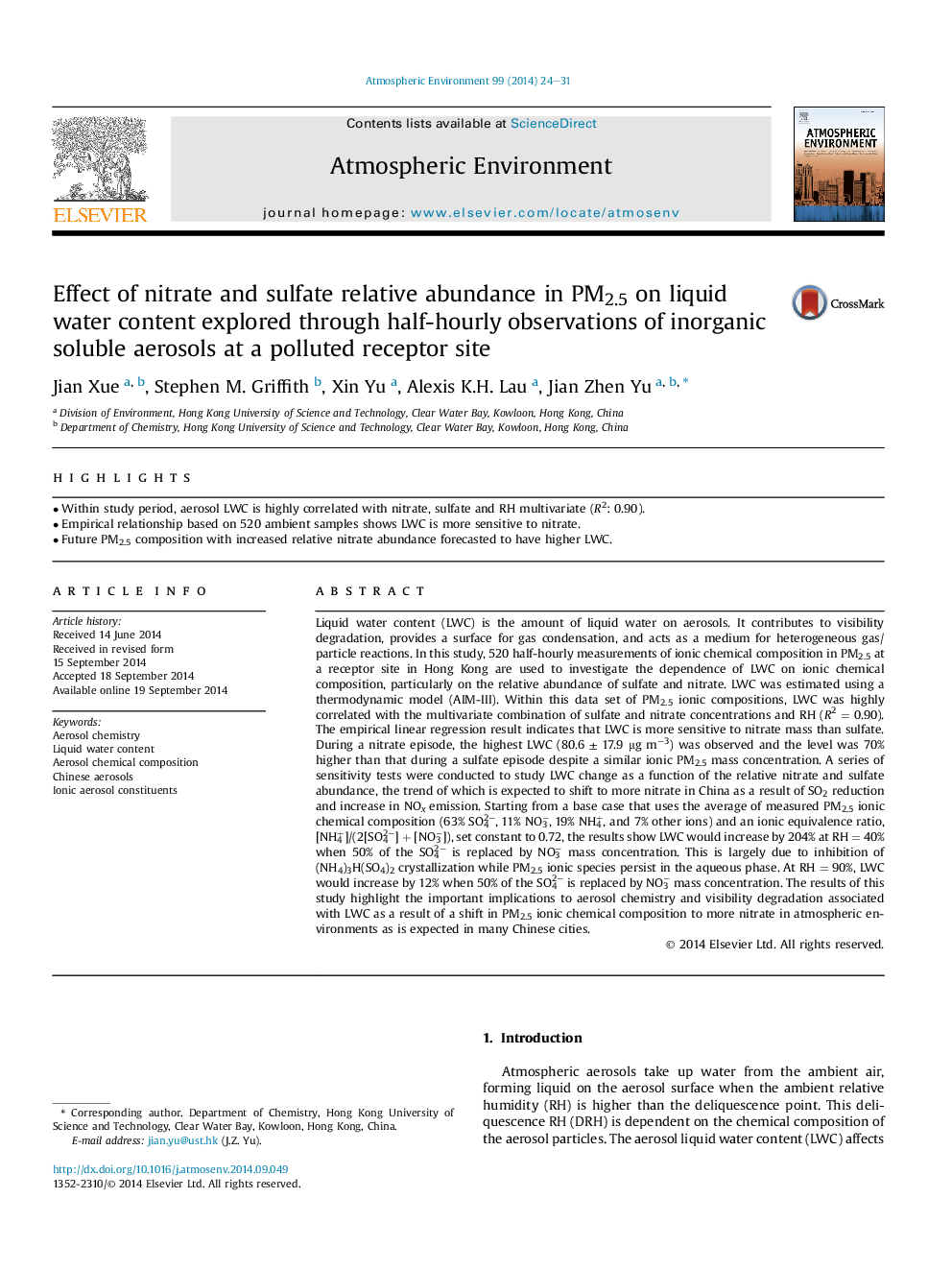| کد مقاله | کد نشریه | سال انتشار | مقاله انگلیسی | نسخه تمام متن |
|---|---|---|---|---|
| 6339062 | 1620372 | 2014 | 8 صفحه PDF | دانلود رایگان |
عنوان انگلیسی مقاله ISI
Effect of nitrate and sulfate relative abundance in PM2.5 on liquid water content explored through half-hourly observations of inorganic soluble aerosols at a polluted receptor site
دانلود مقاله + سفارش ترجمه
دانلود مقاله ISI انگلیسی
رایگان برای ایرانیان
کلمات کلیدی
موضوعات مرتبط
مهندسی و علوم پایه
علوم زمین و سیارات
علم هواشناسی
پیش نمایش صفحه اول مقاله

چکیده انگلیسی
Liquid water content (LWC) is the amount of liquid water on aerosols. It contributes to visibility degradation, provides a surface for gas condensation, and acts as a medium for heterogeneous gas/particle reactions. In this study, 520 half-hourly measurements of ionic chemical composition in PM2.5 at a receptor site in Hong Kong are used to investigate the dependence of LWC on ionic chemical composition, particularly on the relative abundance of sulfate and nitrate. LWC was estimated using a thermodynamic model (AIM-III). Within this data set of PM2.5 ionic compositions, LWC was highly correlated with the multivariate combination of sulfate and nitrate concentrations and RH (R2 = 0.90). The empirical linear regression result indicates that LWC is more sensitive to nitrate mass than sulfate. During a nitrate episode, the highest LWC (80.6 ± 17.9 μg mâ3) was observed and the level was 70% higher than that during a sulfate episode despite a similar ionic PM2.5 mass concentration. A series of sensitivity tests were conducted to study LWC change as a function of the relative nitrate and sulfate abundance, the trend of which is expected to shift to more nitrate in China as a result of SO2 reduction and increase in NOx emission. Starting from a base case that uses the average of measured PM2.5 ionic chemical composition (63% SO42â, 11% NO3â, 19% NH4+, and 7% other ions) and an ionic equivalence ratio, [NH4+]/(2[SO42â] + [NO3â]), set constant to 0.72, the results show LWC would increase by 204% at RH = 40% when 50% of the SO42â is replaced by NO3â mass concentration. This is largely due to inhibition of (NH4)3H(SO4)2 crystallization while PM2.5 ionic species persist in the aqueous phase. At RH = 90%, LWC would increase by 12% when 50% of the SO42â is replaced by NO3â mass concentration. The results of this study highlight the important implications to aerosol chemistry and visibility degradation associated with LWC as a result of a shift in PM2.5 ionic chemical composition to more nitrate in atmospheric environments as is expected in many Chinese cities.
ناشر
Database: Elsevier - ScienceDirect (ساینس دایرکت)
Journal: Atmospheric Environment - Volume 99, December 2014, Pages 24-31
Journal: Atmospheric Environment - Volume 99, December 2014, Pages 24-31
نویسندگان
Jian Xue, Stephen M. Griffith, Xin Yu, Alexis K.H. Lau, Jian Zhen Yu,